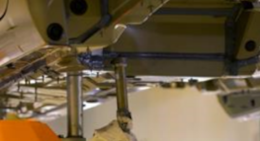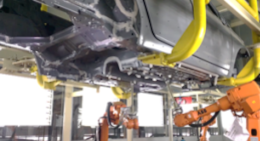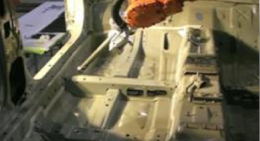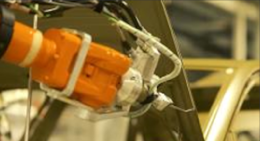Sealing
Process efficiency for all kind of application
UBS - For the sealing process targeting welds on the vehicle underbody (e.g., wheel arches, floor panel areas), robots are utilized to apply sealant via high-pressure extrusion, forming flat adhesive strips that cover the welds. This ensures waterproofing, dust prevention, rust protection, and noise insulation/reduction.

UBC - The protective coating process extensively applied to underbody floor panels typically involves spray-applied PVC resin or stone impact-resistant materials, forming a continuous protective layer that prevents corrosion from salt, water, and mud while resisting stone chip damage.

RP - This adhesive application process, employed in automotive body manufacturing for door sill areas, serves primary functions including sealing and protection, structural reinforcement, noise insulation and reduction, and aesthetic enhancement.

LASD - a novel polymer material, replaces traditional asphalt damping sheets via spray application, primarily utilized for optimizing vehicle NVH (Noise, Vibration, Harshness) performance. Its core functions encompass noise insulation and reduction, lightweighting, and environmental sustainability.

ISS - This adhesive application technology is a robotic automation-based high-precision sealing process, primarily deployed in automotive manufacturing for weld seam sealing and structural bonding applications. Its core functionalities include precision sealing, quality consistency, and process efficiency enhancement.

FAD - This technology is an automated process for cosmetic adhesive application in automotive manufacturing, primarily applied to aesthetically critical zones such as door gaps and body panel joints. Its core functionalities encompass aesthetic integrity, sealing performance, and process substitution capability.

